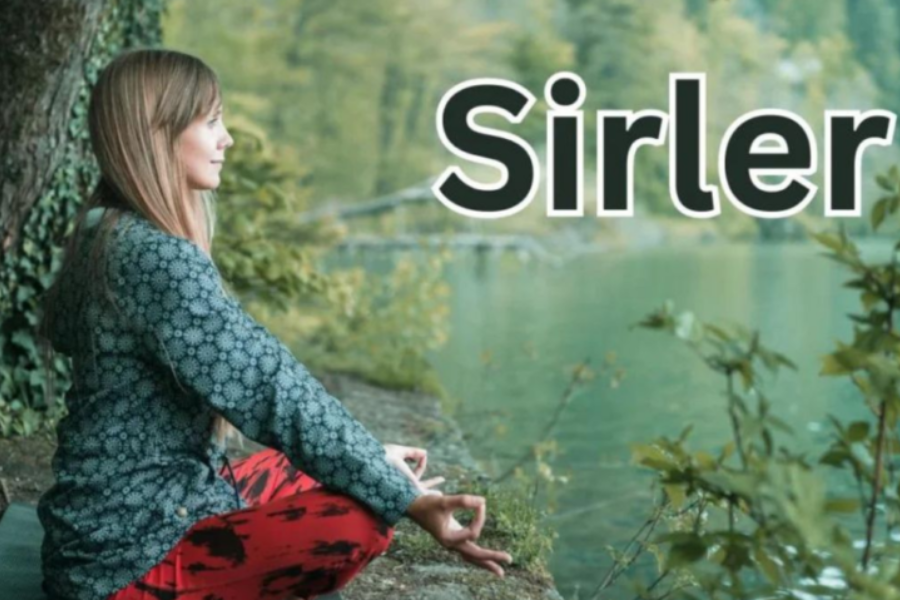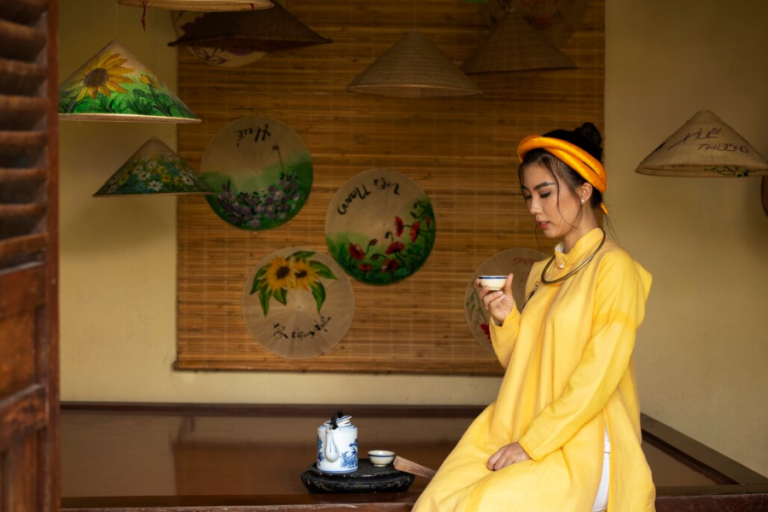Sirler: A Modern Approach to Deep Reflection and Self-Discovery
Introduction
In the whirlwind of our daily lives, the practice of pausing to reflect often takes a backseat. However, these moments of introspection are where true clarity, purpose, and personal growth emerge. Reflection helps us understand ourselves better, learn from our experiences, and make well-informed decisions. This blog delves into the transformative power of reflection through a modern approach known as Sirler, offering insights and practical tips for harnessing this method for personal development. Whether you’re keen on self-improvement, lifelong learning, or seeking personal growth, this guide will provide valuable strategies to enhance your reflective practices.
Understanding Sirler
Definition and Origin of Sirler
Sirler represents a contemporary method of reflection that merges traditional introspective techniques with innovative practices aimed at deeper self-awareness. Emerging from the convergence of psychology and mindfulness, Sirler establishes a structured yet adaptable framework for exploring one’s thoughts and emotions. Unlike conventional reflection methods, which typically involve journaling or meditation, Sirler integrates interactive elements engaging both the mind and body for a more comprehensive experience.
How Sirler Differs from Traditional Reflection Methods
Traditional reflection methods generally involve written or mental exercises. For example, journaling requires recording thoughts and feelings, while meditation focuses on observing mental processes. Sirler, in contrast, incorporates a blend of practices including guided visualization, physical movement, and artistic expression. This holistic approach ensures that reflection becomes an immersive experience engaging all senses, thus fostering deeper insight and self-understanding.
Examples of Sirler in Action for Personal Development
Imagine beginning your day with a guided visualization to set intentions and visualize your goals. Follow this with a few minutes of journaling your thoughts, and then engage in mindful movement like yoga or stretching. This combination of techniques enhances the depth of your reflection and provides actionable insights. Many individuals who have adopted Sirler report significant personal growth, including enhanced emotional intelligence, improved decision-making abilities, and a stronger sense of purpose.
The Power of Reflection
Importance of Reflection in Personal Growth and Learning
Reflection is a crucial tool for personal development and learning. It allows for a pause to evaluate experiences, understand reactions, and draw lessons. Regular reflection helps identify behavioral patterns, recognize strengths and weaknesses, and make informed decisions. Additionally, it ensures alignment with personal values and long-term goals, facilitating a coherent approach to personal growth.
Benefits of Regular Reflection on Mental Health and Well-Being
Engaging in regular reflection yields numerous mental health benefits. It helps alleviate stress by giving you control over your thoughts and emotions. Enhanced self-awareness through reflection is vital for emotional intelligence, enabling more effective emotional management and a positive outlook. Furthermore, reflection can improve relationships by fostering a better understanding of others’ perspectives and enhancing communication skills.
Insights from Famous Leaders and Thinkers Who Credit Reflection for Their Success
Many renowned leaders and thinkers attribute their success to regular reflection. Mahatma Gandhi, for example, practiced daily reflection to remain aligned with his values and objectives. Similarly, Steve Jobs was known for his reflective walks, which helped him evaluate ideas and decisions. These practices contributed to their focused leadership and effective decision-making. Incorporating reflection into your daily routine can similarly help you achieve personal growth and success.
Practical Applications of Sirler
Steps to Integrate Sirler into Daily Routines for Maximum Effectiveness
Incorporating Sirler into your daily routine can be straightforward and effective. Begin by designating a specific time each day for reflection, whether in the morning, during lunch, or before bed. Utilize this time to engage in Sirler practices such as journaling, guided visualization, or mindful movement. Create a tranquil and comfortable space to ensure your reflection sessions are free from distractions.
Tools and Techniques for Enhanced Reflection Using Sirler
Several tools and techniques can enhance your Sirler practice. Journals and guided visualization apps offer structure and guidance for your reflection sessions. Mindfulness apps can help maintain focus and presence during your practice. Additionally, incorporating artistic activities like drawing or painting can provide creative outlets for exploring your thoughts and emotions.
Personal Stories or Case Studies of Individuals Who Have Transformed Through Sirler Practices
Numerous individuals have experienced profound personal growth through Sirler. For instance, Sarah, a marketing executive, faced stress and burnout. By integrating Sirler into her daily routine, she gained insight into her stress triggers and developed strategies for managing them. Likewise, John, a college student, used Sirler to enhance his focus and academic performance. Regular reflection allowed him to identify his strengths and weaknesses and implement effective study techniques.
Overcoming Challenges in Reflection
Common Obstacles in Maintaining a Reflective Practice
Maintaining a reflective practice can be challenging due to busy schedules, distractions, and motivation issues. Recognizing these obstacles is the first step toward overcoming them. Setting specific goals for your reflection practice can help maintain focus and motivation.
Strategies to Overcome These Challenges and Stay Committed to Reflection
Several strategies can assist in overcoming challenges and maintaining a commitment to reflection. Prioritize your reflection practice by scheduling it into your daily routine and treating it as a significant appointment. Create a conducive environment by minimizing distractions and ensuring comfort. Stay motivated by setting clear goals, tracking progress, and celebrating achievements to reinforce your practice.
Tips for Creating a Supportive Environment for Personal Reflection
A supportive environment is crucial for maintaining a consistent reflection practice. Choose a quiet and comfortable space for reflection, free from interruptions. Utilize tools such as journals, guided visualization apps, and mindfulness applications to support your practice. Surround yourself with positive and encouraging individuals who foster your growth and development.
Sirler in Community and Work Settings
How Sirler Can Be Applied in Team Building and Professional Development
Sirler can be an effective tool for team building and professional development. By incorporating reflective practices into team meetings and development programs, organizations can promote a culture of self-awareness and continuous improvement. For instance, team members can use Sirler to reflect on personal strengths and weaknesses, set development goals, and offer constructive feedback to one another.
Examples of Companies or Groups That Have Incorporated Sirler into Their Culture with Positive Outcomes
Several organizations have successfully integrated Sirler into their culture with positive results. A tech startup, for example, utilized Sirler practices in team meetings to enhance communication and collaboration. Reflecting on experiences and providing feedback led to improved team dynamics and effectiveness. Similarly, a nonprofit organization employed Sirler in their professional development programs, helping employees identify strengths and set growth objectives.
Advice for Introducing Sirler to New Communities or Teams
Introducing Sirler to new communities or teams can be a rewarding endeavor. Start by outlining the benefits of Sirler and its potential impact on personal and professional growth. Share practical examples and success stories to illustrate its effectiveness. Encourage community or team members to explore Sirler practices and offer support and guidance as they incorporate these techniques into their routines.
Conclusion
In the hustle and bustle of modern life, carving out moments for self-reflection is more crucial than ever. Sirler presents a revolutionary approach to reflection, merging traditional introspective methods with innovative practices to offer a comprehensive framework for personal growth. By integrating guided visualization, mindful movement, and artistic expression, Sirler provides a holistic experience that engages the mind and body, fostering deeper self-awareness and meaningful insights.
Embracing Sirler in your daily routine can lead to significant personal development, improved decision-making, and enhanced emotional well-being. Whether you’re seeking to elevate your self-awareness, manage stress more effectively, or achieve your personal and professional goals, Sirler offers practical tools and techniques to guide your journey. By making reflection a regular part of your life, you set the stage for continuous learning and growth, unlocking your full potential.
FAQs
1. What is Sirler, and how does it differ from traditional reflection methods?
Sirler is a modern reflection method that combines traditional introspective techniques with innovative practices. Unlike conventional methods, which typically involve journaling or meditation, Sirler integrates guided visualization, physical movement, and artistic expression to create a more immersive and holistic reflection experience.
2. How can I integrate Sirler into my daily routine?
To integrate Sirler into your daily routine, set aside specific times for reflection each day. You can start with practices like guided visualization, journaling, and mindful movement. Create a comfortable, distraction-free space for your reflection sessions and use tools like journals or mindfulness apps to support your practice.
3. What are the benefits of using Sirler for personal development?
Sirler offers numerous benefits, including enhanced self-awareness, improved decision-making, reduced stress, and a stronger sense of purpose. By engaging both the mind and body, Sirler helps you gain deeper insights into your thoughts and emotions, leading to significant personal growth.
4. Can Sirler be applied in a professional or team setting?
Yes, Sirler can be effectively applied in professional and team settings. It can be used in team-building activities, professional development programs, and organizational culture initiatives to promote self-awareness, improve communication, and enhance collaboration.
5. What are some common challenges in maintaining a reflective practice, and how can I overcome them?
Common challenges include busy schedules, distractions, and lack of motivation. To overcome these, prioritize your reflection practice by scheduling it as a significant appointment, create a conducive environment, and set clear goals. Regularly track your progress and celebrate achievements to stay motivated.
6. Are there any success stories or examples of individuals or organizations that have benefited from Sirler?
Yes, many individuals and organizations have reported positive outcomes from using Sirler. For example, Sarah, a marketing executive, managed to reduce stress and improve her well-being through Sirler practices. Similarly, companies have successfully integrated Sirler into their culture to enhance team dynamics and professional development.
7. How can I get started with Sirler if I’m new to reflective practices?
To get started with Sirler, begin by familiarizing yourself with its techniques, such as guided visualization, mindful movement, and artistic expression. Start with short, manageable sessions and gradually incorporate more elements as you become comfortable. Seek out resources or support from those experienced with Sirler to guide your initial efforts.
Stay tuned for the latest news and updates on englandtimes






